Instrukcja Bowers and Wilkins DM603 S2 Głośnik
Potrzebujesz instrukcji dla swojego Bowers and Wilkins DM603 S2 Głośnik? Poniżej możesz bezpłatnie obejrzeć i pobrać instrukcję w formacie PDF w języku polskim. Ten produkt ma obecnie zadane 5 pytania, 0 komentarzy i 0 głosów. Jeśli nie jest to podręcznik, którego szukasz, skontaktuj się z nami.
Czy Twój produkt nie działa, a w instrukcji obsługi brakuje rozwiązania Twojego problemu? Udaj się do Repair Café, gdzie naprawisz swój sprzęt za darmo.
Instrukcja
Loading…

Loading…
Ocena
Podziel się z nami swoją opinią na temat Bowers and Wilkins DM603 S2 Głośnik i oceń urządzenie. Chcesz podzielić się swoimi doświadczeniami z tym produktem lub zadać pytanie? Zostaw komentarz na dole strony.Więcej o tej instrukcji
Rozumiemy, że miło jest mieć papierową instrukcję obsługi Bowers and Wilkins DM603 S2 Głośnik. Zawsze możesz pobrać instrukcję z naszej strony internetowej i wydrukować ją samodzielnie. Jeśli chcesz otrzymać oryginalną instrukcję, zalecamy skontaktowanie się z Bowers and Wilkins. Być może będą w stanie dostarczyć oryginalną instrukcję. Szukasz instrukcji swojego Bowers and Wilkins DM603 S2 Głośnik w innym języku? Wybierz preferowany język na naszej stronie głównej i wyszukaj numer modelu, aby sprawdzić, czy jest on dostępny.
Dane techniczne
| Marka | Bowers and Wilkins |
| Model | DM603 S2 |
| Kategoria | Głośniki |
| Typ pliku | |
| Rozmiar pliku | 1.34 MB |
Wszystkie podręczniki dla Bowers and Wilkins Głośniki
Więcej podręczników Głośniki
Często zadawane pytania dotyczące Bowers and Wilkins DM603 S2 Głośnik
Nasz zespół wyszukuje przydatne informacje na temat produktu i udziela odpowiedzi na często zadawane pytania. Jeśli znajdziesz nieścisłości lub błędy w naszych odpowiedziach na pytania, poinformuj nas o tym przy pomocy naszego formularza kontaktowego.
Chcę podłączyć głośnik do telewizora za pomocą HDMI, którego portu powinienem użyć? Zweryfikowany
Musisz użyć portu HDMI-ARC, który jest przeznaczony specjalnie do podłączania sprzętu audio.
To było pomocne (1368) Czytaj więcejCo częstotliwości mówią o moim głośniku? Zweryfikowany
Wskazuje zakres częstotliwości, które może wytworzyć głośnik. Większy zakres częstotliwości zapewni większą różnorodność i wyższą jakość dźwięku.
To było pomocne (745) Czytaj więcejKiedy moja muzyka jest zbyt głośna? Zweryfikowany
Dźwięki powyżej 80 decybeli (dB) mogą zacząć uszkadzać słuch. Dźwięki powyżej 120 dB powodują natychmiastowe uszkodzenie słuchu. Nasilenie uszkodzenia zależy od częstotliwości i czasu trwania dźwięku.
To było pomocne (436) Czytaj więcejCzy Bluetooth działa przez ściany i sufity? Zweryfikowany
Sygnał bluetooth będzie działał przez ściany i sufit, chyba że są one wykonane z metalu. W zależności od grubości i materiału ściany sygnał może stracić na sile.
To było pomocne (200) Czytaj więcejDo jakiego poziomu hałasu jest to bezpieczne dla dzieci? Zweryfikowany
Dzieci uszkadzają słuch szybciej niż dorośli. Dlatego ważne jest, aby nigdy nie wystawiać dzieci na hałas głośniejszy niż 85 dB. W przypadku słuchawek istnieją specjalne modele dla dzieci. W przypadku głośników lub innych sytuacji należy uważać, aby hałas nie przekraczał tego poziomu.
To było pomocne (178) Czytaj więcej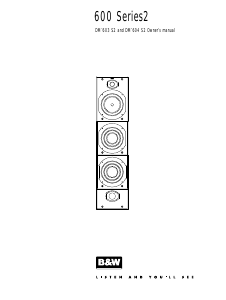


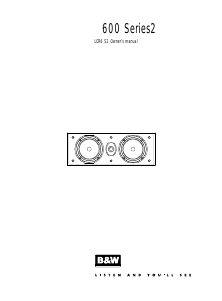

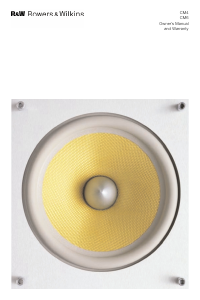
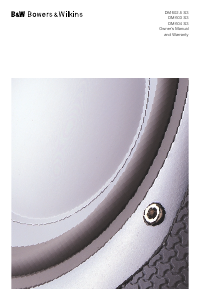
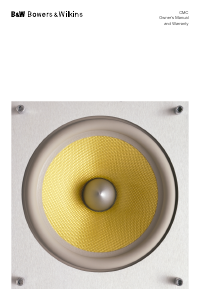
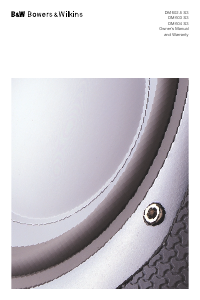

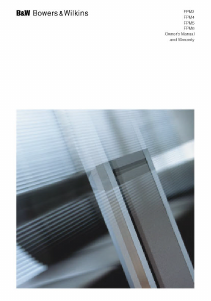
Dołącz do dyskusji na temat tego produktu
Tutaj możesz podzielić się swoją opinią na temat Bowers and Wilkins DM603 S2 Głośnik. Jeśli masz pytanie, najpierw dokładnie przeczytaj instrukcję. Zapytanie o instrukcję można złożyć za pomocą naszego formularza kontaktowego.